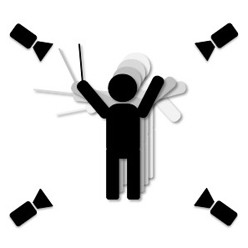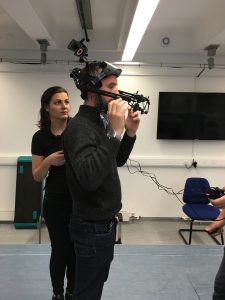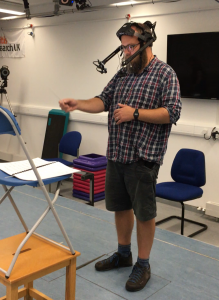After months of planning and two days of setting up equipment, Capture Day finally took place on 27th September 2017. The team arrived early to make sure the systems were up and running ready for the conductors and ensemble.
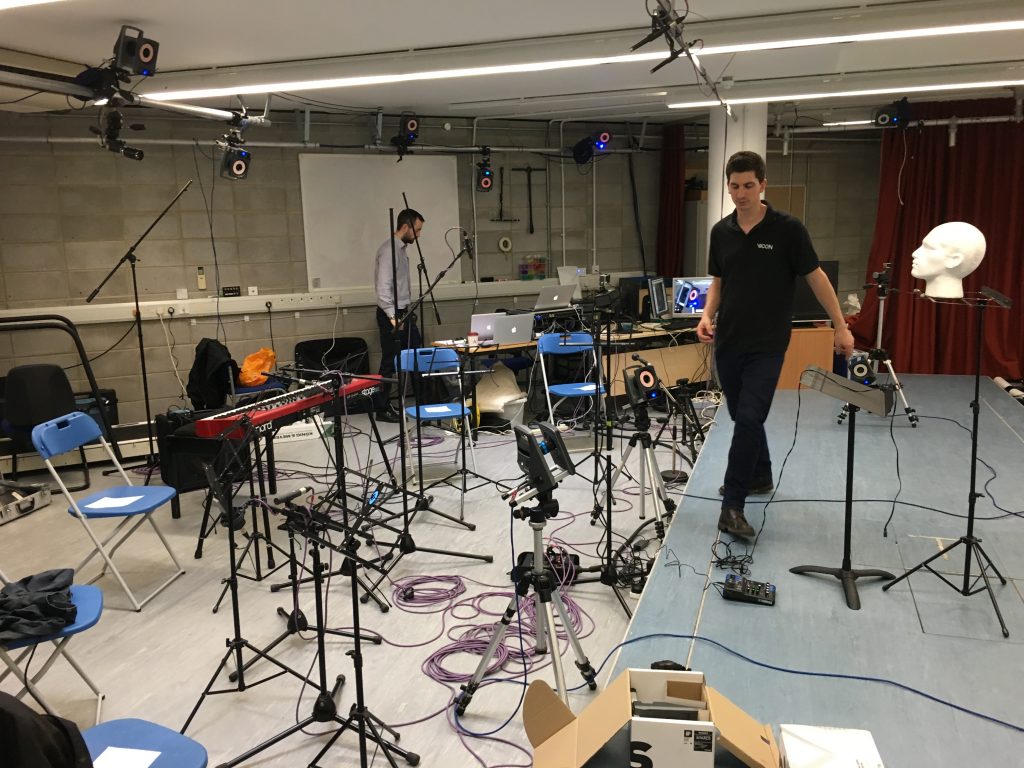
Three conductors – our own Ben Oliver, Holly Mathieson and Geoffrey Paterson were captured in turn, each having rehearsal time with the ensemble prior to giving two performances which were both captured.
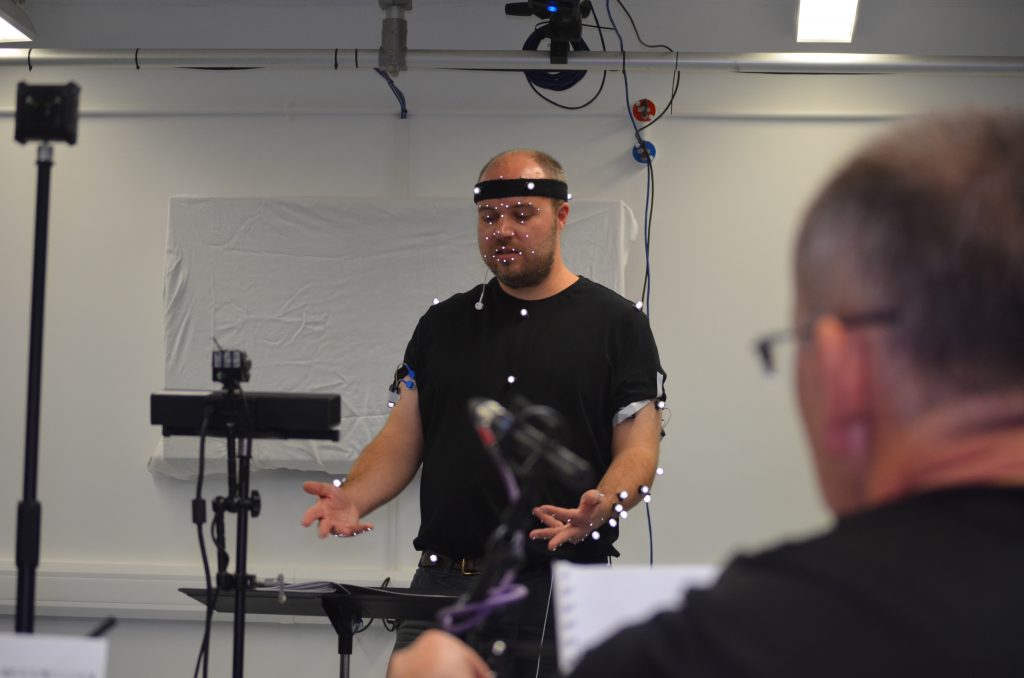
Thanks to Vicon’s generosity in lending us additional cameras and devices for the capture system, as well as technical support to optimise the system, we managed to obtain high quality face, body and hand data from the conductors.
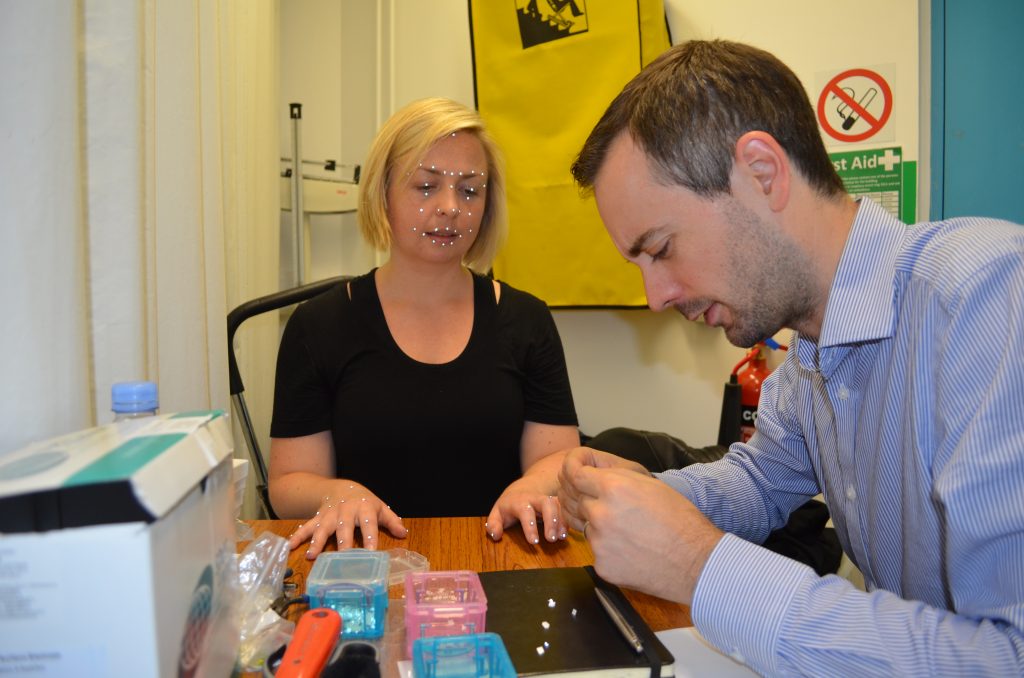
In addition to the Vicon motion data, we have video of the conductors and ensemble from 7 cameras (including a 360 degree video) in various locations, plus motion data from a Kinect 2, audio recording from stereo and close microphones and muscle data from four wireless EMG devices on the conductors’ biceps and triceps.
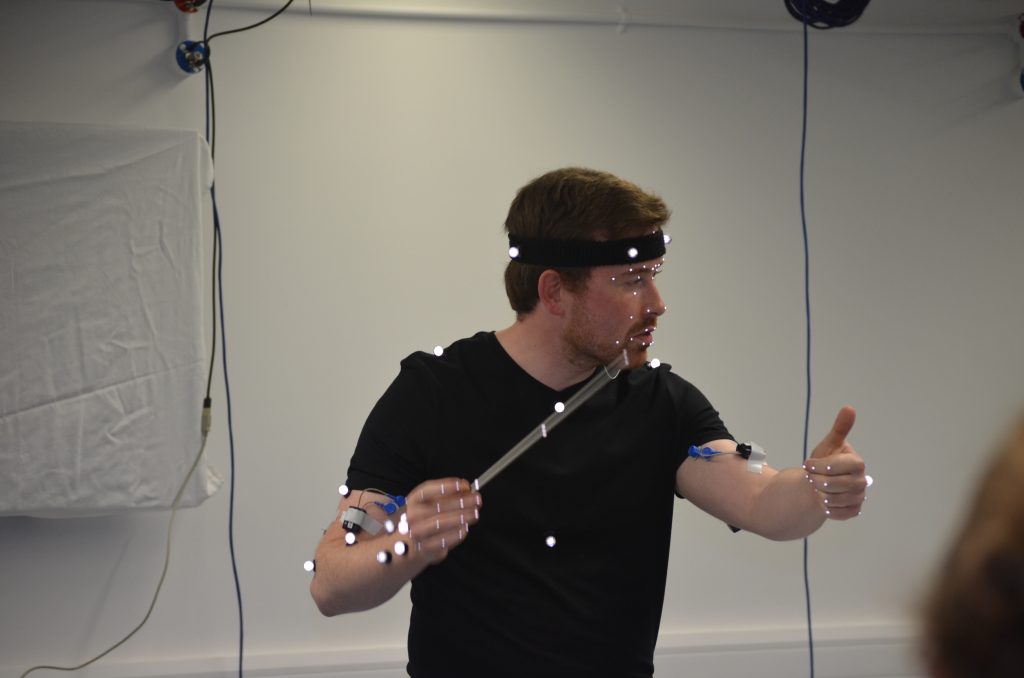
The day ran very smoothly, with help from Harry Matthews, Beth Walker and Sergiu Rusu (student and recent graduates) to help with unsticking and sticking markers amongst other activities!
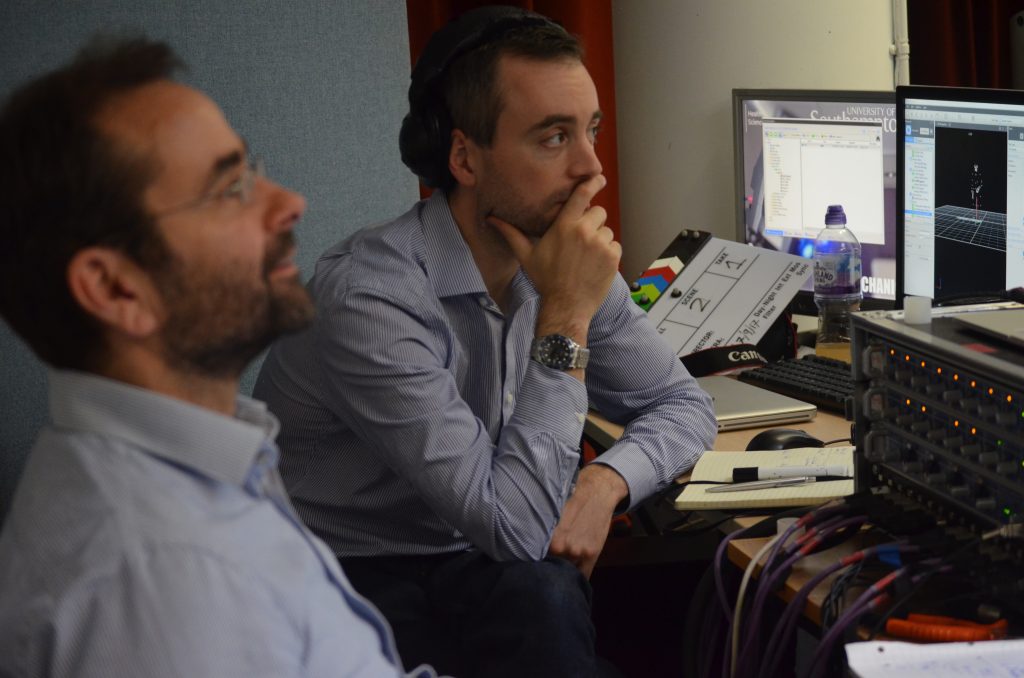
We are deeply grateful to Bob Dimmock, Phil Bacon, Matt Oughton and everyone at Vicon for all their help and generosity in making this day a success. We’d also like to thank Geoff and Holly for being such willing guinea pigs, and also our ensemble, for their wonderful patience and playing: Anna Durance (oboe + electronics); Vicky Wright (bass clarinet); Julian Poore (trumpet); Joley Cragg (percussion); Liga Korne (electric piano); Aisha Orazbayeva (violin) and Dan Molloy (double bass).
Finally, of course our thanks to The British Academy and the Leverhulme Trust for their funding of the project.
